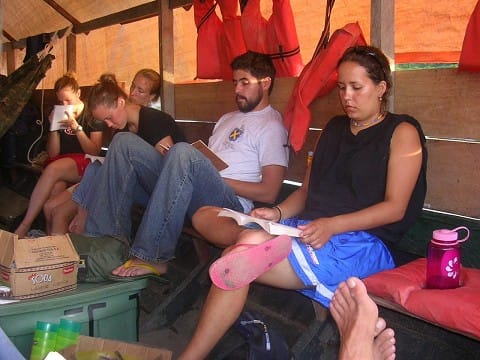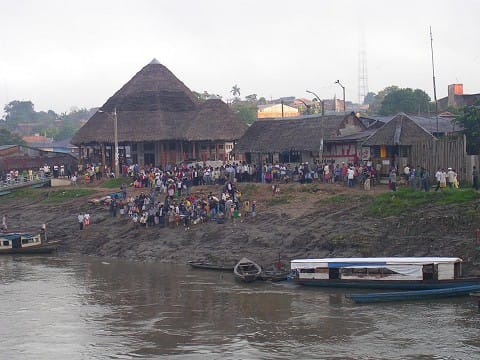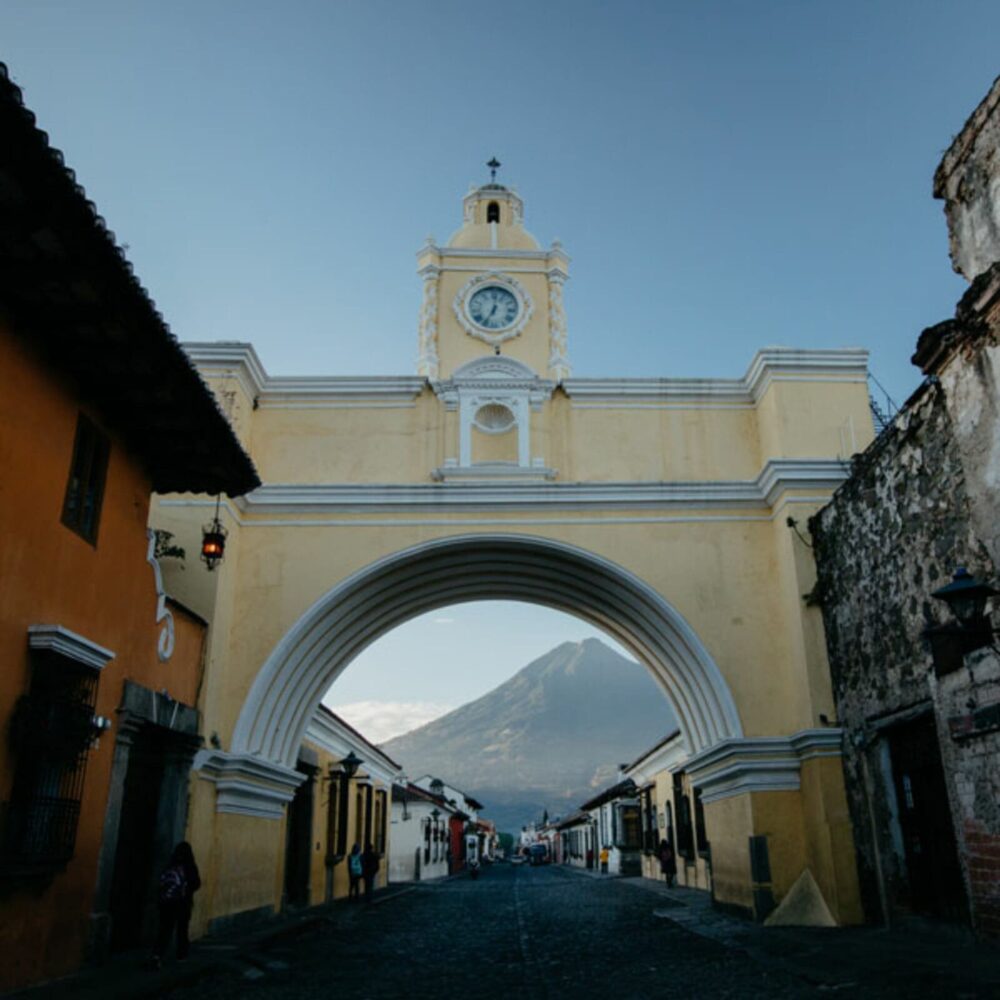and His purposes are being fulfilled in a number of places and in a multiplicity
of ways. You have an opportunity—and an invitation—to play a part.

God is clearly at work in South America. Here in Peru, His plans are unfolding
and His purposes are being fulfilled in a number of places and in a multiplicity
of ways. You have an opportunity—and an invitation—to play a part.
There is no one so small that they escape the Father’s notice. In Peru—and
especially in Lima—there are innumerable thousands who have been forgotten by
the world: Families living in shanty towns that would shock most of us; Women
with children whose fathers have abandoned them, struggling to survive; Children
who have been abused and left to fend for themselves; Elderly women from the
high mountains who beg simply to subsist.
These forgotten ones represent unlimited ministry opportunity. Perhaps God is
calling you to join a team of college-aged students who invest the equivalent of
two semesters that can truly make a world of difference for some. The bonus is
that it can also make a world of difference for you.
What will my ministry in Peru look like?
To some extent, the shape of your ministry depends on you. We believe deeply
that God communicates with us—and that we can learn to hear His voice. God has a
purpose and calling that is specific to you that will align with your gifts,
both spiritual and natural. Each First Year Missionary will develop a ministry
internship that averages about 20 hours per week.
There are existing ministry organizations and institutions that have a
desperate need for workers. There is also the potential to develop a personal
ministry based on an individual sense of call. The needs are everywhere and they
are obvious. There are abundant ministry opportunities involving youth, the
elderly, impoverished families, unwed mothers, and people struggling with
substance abuse issues. Our perception is that, overall, the church in Peru
isn’t doing an effective job discipling those who have chosen to follow Christ.
And there are, of course, millions who’s core need is to have a personal
relationship with a living God. If your passion is evangelism, you will find
many who are receptive to a message of hope.

We will help you discern God’s calling and we will help keep you accountable.
If you will do your part, you will see the transformation that is exclusive to
God’s Kingdom. It is an incredible privilege to be in an authentic partnership
with God!
Discipleship is key
Dallas Willard says that the evil nature within us is so radical and
thoroughgoing that it requires an equally radical and thoroughgoing remedy. That
remedy is discipleship. Authentic discipleship is the great need of the church
in this day—and the great need of the individuals who make up that church in
this day.

Many have responded to a message of salvation that has—with grievous
results—been stripped of the equally imperative call to discipleship. After all,
how many of us would turn away from a free life preserver if we were drowning?
If you read the great commission, we are not called to go and make converts,
we are called to go and make disciples. When Jesus encountered a sin-sick soul,
he didn’t ask that person to simply adopt the right theology and enlist in the
right club. He invited that individual to follow Him—to live with Him and to
learn from Him. While the mechanics are a little different today, the call is
still the same. There is no substitute for discipleship, no shortcut to the
prevailing Christian life.
We say that Christianity isn’t a religion, it’s a relationship. But how many
of us actually experience a vital day-to-day relationship with Jesus?
The call to every believer is to count the cost and to take up the cross of
discipleship. There is death in that cross—death to our old sinful nature. But
there is also resurrection life in that cross. In that resurrection life is
supernatural power and transformation. This is where we find the Kingdom.
An integral part of your nine months in Peru will be living in close
relationships within which genuine discipleship takes place—learning to live
with Jesus and to hear His voice; submitting our lives to Him in such a way that
the transformation described in Romans 12 can be realized substantively in our
lives.
What will my environment look like?
Peru is on South America’s west coast. It is about the size of Alaska and its
southern tip is near the mid-point of the continent (running north to south). It
is bordered by Ecuador and Columbia to the north, Brazil and Bolivia to the west
and Chile to the south. It is both a land of stunning beauty as well as stark,
depressing poverty.

Peru has three distinct and extreme geographies: the desert coast, the
highlands, and the jungle. The Andes is the second highest mountain range in the
world. The headwaters to the Amazon River are in Peru, near its shared border
with Ecuador.
Peru is the birthplace of the ancient and proud civilization of the Incas.
The high mountain people are descendents of the Inca. It is no small irony that
so many of them have been reduced to begging on the streets and byways of a city
established by Spanish Conquistadores.
Lima is a throbbing, sprawling city of over 9 million inhabitants. It is
located midway along the country’s Pacific coastline and, as such, gets very
little in the way of rain. Set inland from the ocean, Central (or Old Town) Lima
is the city’s historic district. Many of the structures built by the Spanish are
reminders of Lima’s Colonial past. Mira Flores has long been Lima’s chief
financial district. It is also Lima’s most popular tourist area. Generally
speaking, the further north and south you get from the main part of Lima, the
poorer the communities you will find. To the east is where you will find Lima’s
middle class districts. When you get beyond those, you will find newer—and
poorer—communities.
Lima has many shanty towns where public services like running water are still
lacking. Large numbers of high mountain people have come looking for work and a
better life, only to find themselves in desperate circumstances. You will find
many dwellings where the floors are dirt, the walls are made of some make-shift
materials and the roof is a sheet of plastic. It is not unusual to find a family
of five or six living in an 8′ X 12′ space. You will see many beggars in the
well-trafficked areas of Lima. At traffic lights you will find Lima’s underclass
trying to eke-out a living by selling food or trinkets. Theft is a pervasive
problem in Peru.
What is the spiritual environment like?
God’s Kingdom is moving forward powerfully in Peru. Reports of the
supernatural intersecting with the natural are not uncommon. Many are coming to
faith in Jesus and God’s love is transforming lives. However, the Kingdom
doesn’t advance without opposition.
As is true anywhere, the influence of culture in Peru is very powerful. You
will read in texts that Peru is 90% Catholic. The reality is that the vast
majority of Peruanos are only nominally Catholic. Catholicism in Peru has been
influenced heavily by Peru’s pagan past—many superstitions and beliefs have been
absorbed into Catholic tradition. There are many peoples in the highlands and in
the jungles of Peru who have never heard the gospel.
Spiritual reality—both the reality of evil and the reality of God—seem to be
much more on the surface in Peru than we are used to in the U.S. Paganism is
very much alive in Peru and it is hostile to authentic Christianity. Islam is
gaining a small foothold in the south.

There is tremendous need in Peru and there is an amazing openness to the Good
News of the gospel. This seems to be especially true among Peru’s needy. At
present, the majority of people in Peru tend to view the U.S. and its citizens
quite positively. This presents a tremendous opportunity. Peru is a land that is
ripe unto harvest.








